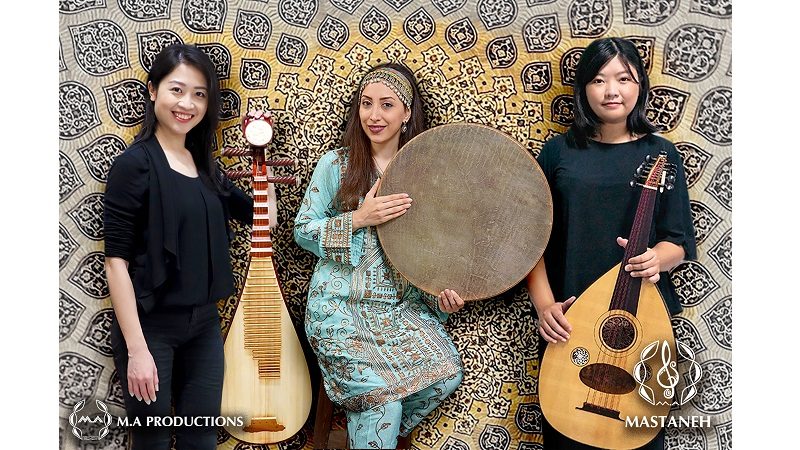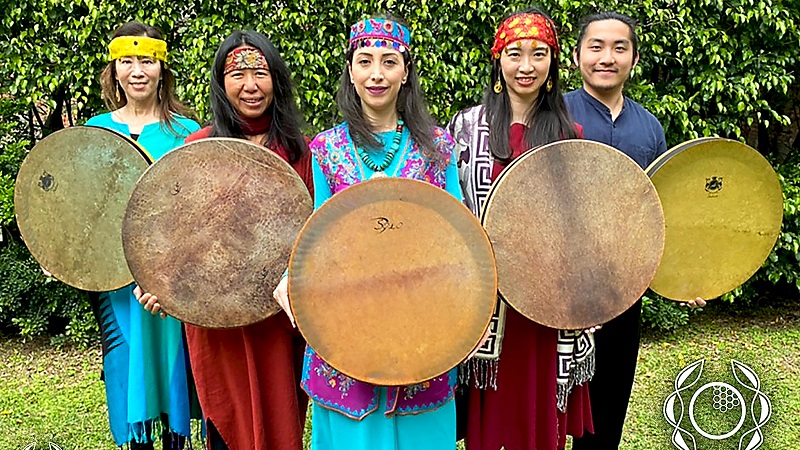A Performance Merging Two Civilizations 4/5
Interview: Mona Kaveh Ahangari and Ali Montazami (co-founders of M.A PRODUCTIONS) speak with Music Press Asia’s editor-in-chief Monica Tong to uncover the cultural influences of these traditional instruments and why it is important to keep them alive.
Interview: Mona Kaveh Ahangari and Ali Montazami (co-founders of M.A PRODUCTIONS) speak with Music Press Asia’s editor-in-chief Monica Tong to uncover the cultural influences of these traditional instruments and why it is important to keep them alive.

Return to the previous page
5. In another live recording of 45 daf musicians, we saw a passionate performance of traditional drums played in unison. Their legs were stamping the ground and the hands moving in circular motion. Has this movement always been a traditional way of playing the DAF? Tell us about the context of this performance of why the big gestures are accompanied by loud thumping and formality of a show like this.
MK Ahangari: The video you see in (Ahangari, 2018) is part of a concert that I had a collaborative performance with “Jam Orchestra” under the leadership and music composition of Master Reza Darbandi in Iran. I was a Daf performer and also director of section two from the three sections of the band in this series of concerts. That was a great and joyful experience playing together with 45 Daf players. Due to the popularity of Daf and public interest in Daf music and history, there are many Daf group playing bands in Iran which perform in large or small groups.
As a spiritual instrument for many years, Daf is being used for spiritual and Sufi events in special places like temples called “Khaneghah”. In these spiritual gatherings, people do Sufi Whirling and a kind of meditation and praying with repetitive rhythmic body movements while several Daf players support the prayers by maintaining different specific rhythms named “Maghams”. The prayers also keep saying some “Zekr” (like mantras) while moving their body with that rhythm. The tradition of Daf group playing may be formed through these ceremonies but the solo playing of Daf and improvised solo performances are also very popular in Iran.

A Montazami: The costume you see in the “Jam Orchestra” concert, is not in any way traditional, but a style designed through a combination of traditional and modern elements. Iran is a country with high diversity in ethnicities and cultures with more than twenty different speaking languages. Each part of Iran has its own culture and traditional clothing. Therefore, if a music band wants to be known as a local music band, they wear local traditional clothes, but for general music bands which are not local or do prefer to represent the whole of Iran, like “Jam Orchestra”, designed their performing dress code by the inspiration from various traditional cloths and art elements of Iran.
Except for spiritual and Sufi ceremonies which contain specific rhythmic group body and Daf movements, the other movements that you see in Daf performances are a kind of designed performances. Each solo performer or group performers want to harmonize their movements with their music to provide as much as possible excitement and emotions to the audience. When it comes to the Daf group playing in large groups such as “Jam Orchestra” the harmonic movements and accompanying several Daf players together can create a very exciting performance.
Now in Taiwan, in addition to Mona’s solo performances, we perform Daf group playing with DAFSUN, the other music band of M.A PRODUCTIONS, and for the future, we have the vision to put such huge group performances in Taiwan and other countries with our Daf players someday.
Click to read page (5)




